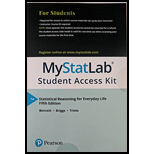
Concept explainers
Politics
Who Benefited Most from Lower Tax Rates?
Politicians have a remarkable capacity to cast numbers in whatever light best supports their positions. There are many ways in which numbers can be made to support a particular position, but one of the most common occurs through selective use of relative (percentages) and absolute numbers.
Consider the two charts shown in Figure 2.4. Both purport to show effects of the tax rate cuts enacted under President Bush in 2001, which remained in effect until tax rates were raised in 2013. The chart in Figure 2.4a, created by supporters of the tax cuts, indicates that the rich ended up paying more under the tax cuts than they would have otherwise. Figure 2.4b, created by opponents of the tax cuts, shows that the rich received far more benefit from the tax cuts than lower-income taxpayers. The two charts therefore seem contradictory, because the first seems to indicate that the rich paid more while the second seems to indicate that they paid less.
Which story is right? In fact, both of the graphs are accurate and show data from reputable sources. (The U.S. Department of the Treasury, cited as the source of the data for Figure 2.4a, is an agency of the federal government; the Joint Committee on Taxation, cited for Figure 2.4b, is a nonpartisan committee of the U.S. Congress.) The seemingly opposing claims arise from the way in which each group chose its data.

The tax cut supporters show the percentage of total taxes that the rich paid with the cuts and what calculations suggest they would have paid without them. The title stating that the “rich pay more” therefore means that the tax cuts led them to pay a higher percentage of total taxes. However, if total tax revenue also was lower than it would have been without the cuts (as it was), a higher percentage of total taxes could still mean lower absolute dollars. It is these lower absolute dollars that are shown by the opponents of the tax cut.

Figure 2.4 Both charts purport to show effects on higher-income households of tax cuts that were in effect from 2001 through 2012, but they were designed to support opposing conclusions. (a) Based on a graph published in The American—The Journal of the American Enterprise Institute. (b) Based on a graph published by the Center on Budget and Policy Priorities (cbpp.org).
Which side was being more fair? Neither, really. The supporters have deliberately focused on a relative change (percentage) in order to mask the absolute change, which would be less favorable to their position. The opponents focused on the absolute change, but neglected to mention the fact that the wealthy pay most of the taxes. Unfortunately, this type of “selective truth” is very common when it comes to numbers, especially those tied up in politics.
“Politicians and government officials usually abuse numbers and logic in the most elementary ways. They simply cook figures to suit their purpose, use obscure measures of economic performance, and indulge in horrendous examples of chart abuse, all in the name of disguising unpalatable truths.”
—A. K. Dewdney, 200% of Nothing
Questions for Discussion
Discuss the chart in Figure 2.4a. Why does it only show taxpayer income levels from the top 1% to the top 25%? What does it tell us about the relative tax burden on each group shown? Do you think its claim that the “rich pay more” is an honest depiction or a distortion of the facts? Defend your opinion.
Want to see the full answer?
Check out a sample textbook solution
Chapter 2 Solutions
MyLab Statistics with Pearson eText -- Standalone Access Card -- for Statistical Reasoning for Everyday Life (5th Edition)
 Algebra and Trigonometry (MindTap Course List)AlgebraISBN:9781305071742Author:James Stewart, Lothar Redlin, Saleem WatsonPublisher:Cengage Learning
Algebra and Trigonometry (MindTap Course List)AlgebraISBN:9781305071742Author:James Stewart, Lothar Redlin, Saleem WatsonPublisher:Cengage Learning Trigonometry (MindTap Course List)TrigonometryISBN:9781337278461Author:Ron LarsonPublisher:Cengage LearningAlgebra & Trigonometry with Analytic GeometryAlgebraISBN:9781133382119Author:SwokowskiPublisher:Cengage
Trigonometry (MindTap Course List)TrigonometryISBN:9781337278461Author:Ron LarsonPublisher:Cengage LearningAlgebra & Trigonometry with Analytic GeometryAlgebraISBN:9781133382119Author:SwokowskiPublisher:Cengage


